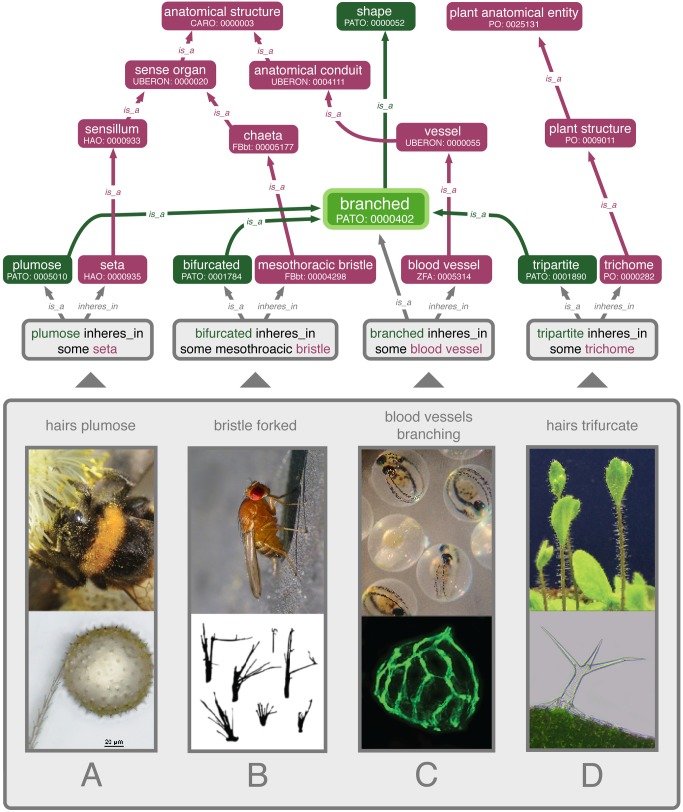XB-IMG-168944
Xenbase Image ID: 168944

|
Figure 1. How to discover branching phenotypes?(Bottom panel) Phenotype data exhibiting various forms of branchiness are not easily discerned from diverse natural language descriptions. (A) Bee hairs are different from most other insect hairs in that they are plumose, which facilitates pollen collection. (B) A mutant of Drosophila melanogaster exhibits forked bristles, due to a variation in mical. (C) In zebrafish larvae (Danio rerio), angiogenesis begins with vessels branching. (D) Plant trichomes take on many forms, including trifurcation. (Top) Phenotypes involving some type of “branched” are easily recovered when they are represented with ontologies. In a semantic graph, free text descriptions are converted into phenotype statements involving an anatomy term from animal or plant ontologies [56],[118] and a quality term from a quality ontology [106], connected by a logical expression (“inheres_in some”). Anatomy (purple) and quality (green) terms (ontology IDs beneath) relate phenotype statements from different species by virtue of the logic inherent in the ontologies, e.g., plumose, bifurcated, branched, and tripartite are all subtypes of “branched.” Image credits: bumble bee with pollen by Thomas Bresson, seta with pollen by István Mikó, Arabidopsis plants with hair-like structures (trichomes) by Annkatrin Rose, Drosophila photo by John Tann, Drosophila bristles redrawn from [119], scanning electron micrograph of Arabidopsis trichome by István Mikó, zebrafish embryos by MichianaSTEM, zebrafish blood vessels from [120]. Figure assembled by Anya Broverman-Wray. Image published in: Deans AR et al. (2015) Image reproduced on Xenbase with permission of the publisher and the copyright holder. This image is reproduced with permission of the journal and the copyright holder. This is an open-access article distributed under the terms of the Creative Commons Attribution license Larger Image Printer Friendly View |
